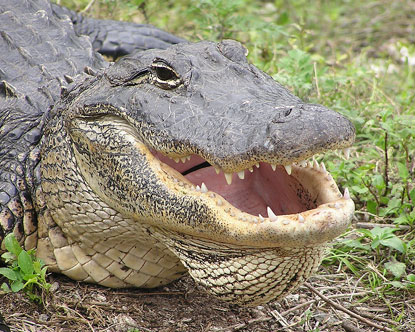"Everglades." Wildlife Conservation, Endangered Species Conservation. N.p., n.d. Web.
30 Nov. 2012. <http://worldwildlife.org/ecoregions/nt0904>.
"Florida Everglades." Natural Resources Defense Council. N.p., 20 Oct. 2009. Web. 29
Nov. 2012. <http://www.nrdc.org/water/conservation/qever.asp>.
"History and Culture." Everglades Florida National Park. National Park Services, n.d.
Web. 2 Dec. 2012. <http://www.nps.gov/ever/historyculture/index.htm>.
"Human Impacts." School of Forest Research and Conservation. University of Florida,
n.d. Web. 02 Dec. 2012. <http://www.sfrc.ufl.edu/4h/Other_Resources/Contest/Highlighted_Ecosystem/swhuman.htm>.
Kushlan, James A. External Threats and Internal Management: The Hydrologic
Regulation of the Everglades, Florida, USA. Springer Link. Department of Biological Sciences, Jan. 1987. Web. 29 Nov. 2012. <http://link.springer.com/article/10.1007%2FBF01867186?LI=true>.
Schmalz, Jeffrey. "Pollution Poses Growing Threat To Everglades." The New York
Times. The New York Times, 17 Sept. 1989. Web. 29 Nov. 2012.
<http://www.nytimes.com/1989/09/17/us/pollution-poses-growing-threat-to
everglades.html?pagewanted=all>.
"Water Management." Friends of the Everglades RSS. N.p., n.d. Web. 30 Nov. 2012.
<http://www.everglades.org/water-management/>.
"Why Restore the Everglades." Why Restore the Everglades. Comprehensive Everglades
Restoration Plan, n.d. Web. 02 Dec. 2012.
<http://www.evergladesplan.org/about/why_restore_pt_04.aspx>.
Images
Burnham, Michael. "Observed Phosphorus Overload." Chart. Everglades. E&E
Publishing, n.d. Web. 29 Nov. 2012.
<http://www.eenews.net/special_reports/everglades/next_frontier/>.
"Early Map of Everglades Drainage Area." Map. National Park Service. N.p., n.d. Web.
30 Nov. 2012. <http://www.nps.gov/ever/historyculture/development.htm>.
Everglades Alligator. Digital image. Everglades Animals. Destination 360, n.d. Web. 30
Nov. 2012. <http://www.destination360.com/north-america/us/florida/everglades
animals>.
Everglades National Park. Digital image. Everglades Coalition. N.p., n.d. Web. 30 Nov.
2012. <http://www.evergladescoalition.org>.
Gibson, William. Everglades Aerial. Digital image. Florida Politics. Sun Sentinel, 13
Aug. 2012. Web. 30 Nov. 2012. <http://weblogs.sun-sentinel.com/news/politics/dcblog/everglades/>.
Gross, Bonnie. Great Egret with Cypress Tree. Digital image. Tamiami Trial: Scenic
Drive Explores Florida Everglades. Florida Rambler, n.d. Web. 30 Nov. 2012. <http://floridarambler.com/florida-getaways/tamiami-trail-scenic-drive-everglades/>.
Highways Running Through the Everglades. Digital image. Sierra Club of the Florida
Everglades. N.p., n.d. Web. 30 Nov. 2012.
<http://florida.sierraclub.org/Everglades_skyway.asp>.
Knight, Erik. "Mean Annual Breeding Population of Wood Storks Nesting in Everglades
National Park, 1950s to 1980s." Chart. South Florida Restoration Science Forum. N.p., May 1999. Web. 30 Nov. 2012. <http://sofia.usgs.gov/sfrsf/rooms/hydrology/mod_flow/>.
Niiler, Eric. Everglades Housing. Digital image. Everglades Oil. How Stuff Works, n.d.
Web. 30 Nov. 2012.
<http://science.howstuffworks.com/environmental/energy/everglades-oil.htm>.
Sawgrass in the Florida Everglades. Digital image. Miami Wildlife. About, n.d. Web. 30
Nov. 2012. <http://miami.about.com/od/photosofmiami/ig/Miami-Wildlife/Sawgrass.htm>.
Thompson, Annette. Map of Everglades. Digital image. Why the Everglades Owns My
Heart. Southern Living, n.d. Web. 30 Nov. 2012.
<http://www.southernliving.com/travel/south-east/florida-everglades-00400000058283/page12.html>.
Thompson, Annette. Birdwatching in the Everglades. Digital image. Why the Everglades
Owns My Heart. Southern Living, n.d. Web. 30 Nov. 2012.
<http://www.southernliving.com/travel/south-east/florida-everglades-00400000058283/page12.html>.
Van Natta, Don, Jr., and Damien Cave. Fields of Cane. Digital image. A Deal to Save the
Everglades. The New York Times, 7 Mar. 2010. Web. 30 Nov. 2012.
<http://www.nytimes.com/2010/03/08/us/08everglades.html>.
"Water Flow Restoration Map." Map. National Park Service. N.p., n.d. Web. 30 Nov.
2012. <http://www.nps.gov/ever/naturescience/cerp.htm>.
Wood Stork in Overflowed Land. Digital image. Dana's and Tom's Travels. Wordpress,
n.d. Web. 30 Nov. 2012. <http://dtstark.wordpress.com/2010/03/12/hello
world/dsc00033b-wood-stork-and-ibis-everglades/>.
Wood Storks in Water. Digital image. Nature Conservancy. N.p.n.d. Web. 30 Nov. 2012.
<http://www.nature.org/ourinitiatives/regions/northamerica/
nitedstates/florida/explore/the-greater-everglades
ecosystem.xml>.














